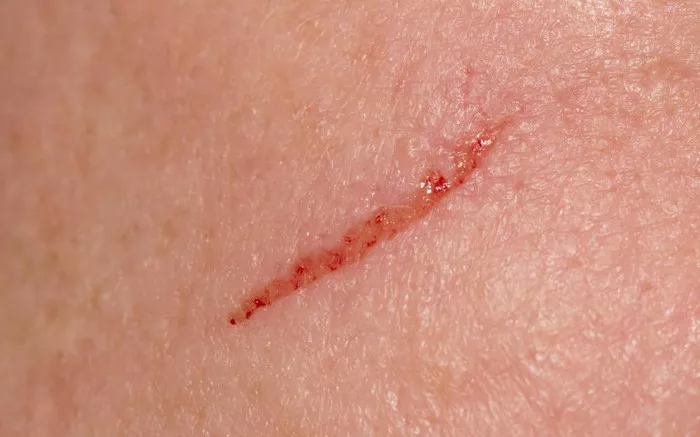Scars are a natural part of the body’s healing process, serving as a visible reminder of past injuries or surgeries. While small scars may seem inconsequential compared to larger ones, they still undergo a complex and dynamic healing journey. In this article, we’ll explore the factors that influence the healing time of small scars, provide insights into the stages of scar formation, and offer practical tips for promoting optimal healing and minimizing scar appearance.
The Anatomy of a Scar
Before delving into the healing time of small scars, it’s important to understand the underlying mechanisms of scar formation. When the skin is injured, whether by a cut, burn, or surgical incision, the body initiates a series of processes to repair the damage and restore the integrity of the skin.
Inflammatory Phase: Immediately following an injury, the body’s immune system responds by sending inflammatory cells to the site of the wound. These cells help to remove debris and bacteria, clean the wound, and initiate the healing process.
Proliferative Phase: During this phase, which typically lasts from a few days to several weeks, the body begins to rebuild the damaged tissue. Specialized cells called fibroblasts produce collagen, a structural protein that forms the foundation of scar tissue. As collagen fibers accumulate, they gradually strengthen and stabilize the wound.
Remodeling Phase: The final phase of scar formation, known as the remodeling phase, can last for months or even years. During this time, the scar undergoes further maturation and refinement as excess collagen is broken down and replaced with stronger, more organized fibers. While the scar may continue to fade and flatten over time, it never fully regains the appearance of undamaged skin.
Factors Influencing Scar Healing Time
The healing time of a small scar can vary significantly depending on a variety of factors, including:
Size and Depth of the Wound: Larger and deeper wounds typically take longer to heal and may result in more pronounced scars. Conversely, small, superficial wounds tend to heal more quickly and may produce less noticeable scars.
Location of the Scar: Scars located in areas of the body with abundant blood supply, such as the face, tend to heal more quickly than those in areas with poor circulation, such as the lower legs. Additionally, scars on joints or areas of constant movement may experience increased tension and take longer to heal.
Age and Overall Health: Younger individuals and those in good overall health tend to heal more quickly than older adults or individuals with underlying medical conditions that impair the healing process, such as diabetes or autoimmune disorders.
Genetics: Genetic factors play a significant role in scar formation and healing. Some individuals are genetically predisposed to develop hypertrophic or keloid scars, which are raised, thickened scars that extend beyond the boundaries of the original wound. These types of scars may take longer to heal and require specialized treatment.
Wound Care and Management: Proper wound care and management can significantly impact the healing time and appearance of a scar. Keeping the wound clean, moist, and protected from further injury can promote optimal healing and minimize scar formation. Additionally, avoiding behaviors that may impede healing, such as smoking or excessive sun exposure, can facilitate the healing process.
Typical Healing Time for Small Scars
While every scar is unique and may heal at its own pace, small scars typically follow a predictable timeline for healing. In general, most small wounds heal within a few weeks to months, with the scar continuing to mature and refine over time. Here’s a general overview of the healing timeline for small scars:
Initial Healing (Days to Weeks): During the initial healing phase, which lasts from a few days to several weeks, the wound closes and begins to form a scab. Inflammation gradually subsides, and new tissue begins to fill in the wound bed. It’s essential to keep the wound clean and protected during this time to prevent infection and promote optimal healing.
Early Scar Formation (Weeks to Months): As the wound continues to heal, collagen production increases, and the scar becomes more prominent. Initially, the scar may appear red, raised, or slightly swollen, but these characteristics typically improve over time as the scar matures. It’s important to avoid activities that may exacerbate scarring, such as picking at scabs or exposing the scar to excessive sunlight.
Maturation and Remodeling (Months to Years): The final stage of scar formation, known as maturation and remodeling, can last for months or even years. During this time, the scar gradually fades in color, flattens, and becomes less noticeable. While the scar may never completely disappear, it often becomes less prominent and blends more seamlessly with the surrounding skin.
Tips for Promoting Optimal Scar Healing
While scars are an inevitable part of the healing process, there are steps you can take to promote optimal healing and minimize scar appearance:
Keep the Wound Clean and Moist: Cleanse the wound gently with mild soap and water to remove dirt and debris, then apply an antibacterial ointment and cover the wound with a sterile bandage. Keeping the wound moist can promote faster healing and reduce the risk of infection.
Protect the Scar from Sun Exposure: Exposure to sunlight can cause scars to darken and become more noticeable. Protect your scar from UV radiation by applying a broad-spectrum sunscreen with an SPF of 30 or higher and covering the scar with clothing or a bandage when outdoors.
Massage the Scar: Gentle massage of the scar tissue can help break up scar tissue and improve blood flow to the area, promoting faster healing and reducing scar stiffness. Use a moisturizing lotion or silicone gel to lubricate the scar and massage in a circular motion for several minutes each day.
Consider Scar Treatment Options: If you’re concerned about the appearance of your scar or experiencing discomfort or limited mobility due to scar tissue, consider consulting a dermatologist or plastic surgeon for treatment options. Options may include topical treatments, laser therapy, steroid injections, or surgical revision.
Be Patient and Persistent: Scar healing is a gradual process that takes time and patience. Be consistent with your wound care routine, follow your healthcare provider’s recommendations, and give your body the time it needs to heal properly. While scars may never completely disappear, they often become less noticeable and more accepted over time.
Conclusion: Navigating the Journey of Scar Healing
In conclusion, the healing time of a small scar can vary depending on a variety of factors, including the size and depth of the wound, its location on the body, and individual health factors. While small scars typically heal within a few weeks to months, the scar continues to mature and refine over time, often becoming less noticeable and more accepted with proper care and management.
By understanding the stages of scar formation, addressing underlying factors that may impact healing, and adopting proactive strategies for scar care, individuals can promote optimal healing and minimize the appearance of scars. Whether it’s keeping the wound clean and protected, avoiding behaviors that may impede healing, or seeking professional treatment when needed, taking an active role in scar management can help navigate the journey of scar healing with confidence and resilience.
[inline_related_posts title=”You Might Be Interested In” title_align=”left” style=”list” number=”6″ align=”none” ids=”7214,7075,7072″ by=”categories” orderby=”rand” order=”DESC” hide_thumb=”no” thumb_right=”no” views=”no” date=”yes” grid_columns=”2″ post_type=”” tax=””]

































